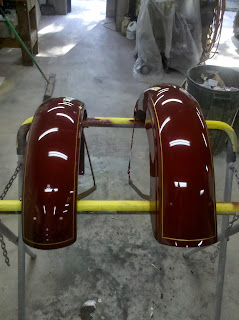Well the sliding completion date is becoming about as useless as a politician's promise. We were scheduled to leave Friday morning, and sometimes around Wednesday it became obvious this Cannonball bike would not be in the parade. But to much work had been done to leave it at home, so I assembled what I had, and we loaded the trailer. Two Germans and an American Indian.
Upon arriving, I find out there is no where to park the trailer, and I will have to take it to the motel. Now with 3 bikes and a truck and only 2 people, that is a problem. While we are trying to decide what to do, I see a sign for the AMCA show. So we decide to pull down there, and see if we can enter the bikes in the show. That way at least we can unload the trailer.
The nice folks from the Confederate Chapter of the AMCA said of course we could enter some bikes, and with the applications filled out, we dropped 2 of the bikes off.
The Indian's first appearance as Cannonball #96
and the 1967 BMW R50/2
The poor old 74 R90 got left out of the show, but we had to have something to ride back from the motel.
Hanging around the show was great. I got to meet some of the other Cannonballers, and check out there equipment. I got a lot of valuable information on what to carry, how to prepare, and what to expect. The effort that everyone puts in to this event is amazing, and it was great to be finally out of the garage with this bike. It was tough when they all headed over to do the parade lap, and I had to watch from the fence. Not much of a spectator.
But I did get a lot of positive feedback on the bike, and all the work done so far. But the biggest surprise of the weekend came when we went to pick the bikes up from the show Saturday afternoon. As I was pushing the Indian off the stand, I heard my name called.
and then for the 1960 / 70 class
It really felt good to get a little recognition for all the work on both of these bikes.
But this Blog, and this journey isn't about show bikes, its about riders. So we loaded the Indian up, and rode the 2 Germans into Birmingham for dinner, then rode around sightseeing a little, then on back to the motel.
A weekend like this always gets a person motivated. All the way back to GA, all I could think about was getting this Indian finished, getting it sorted out, and then prepping for 4100 miles. Daytona to Tacoma.
Its going to be Epic!































